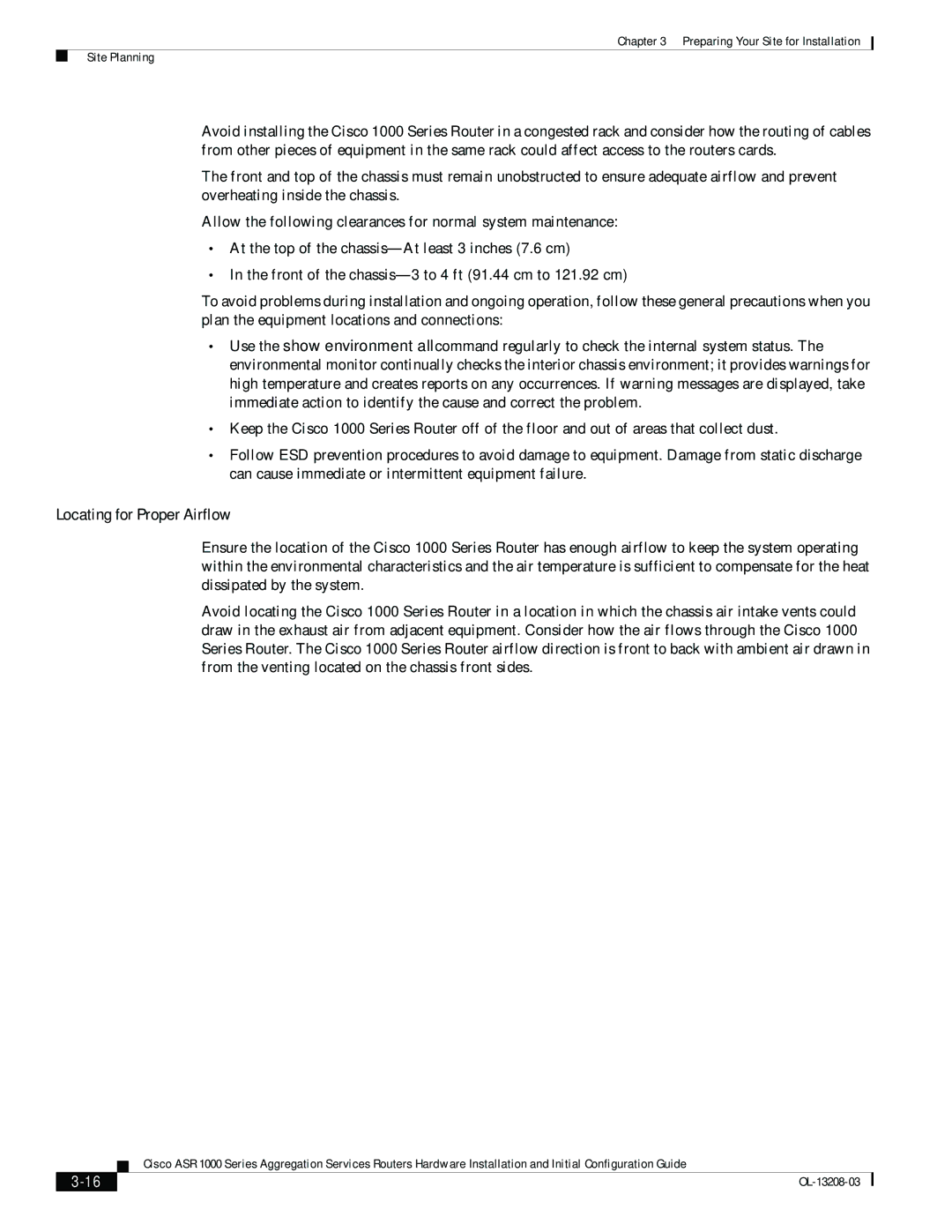
Chapter 3 Preparing Your Site for Installation
Site Planning
Avoid installing the Cisco 1000 Series Router in a congested rack and consider how the routing of cables from other pieces of equipment in the same rack could affect access to the routers cards.
The front and top of the chassis must remain unobstructed to ensure adequate airflow and prevent overheating inside the chassis.
Allow the following clearances for normal system maintenance:
•At the top of the
•In the front of the
To avoid problems during installation and ongoing operation, follow these general precautions when you plan the equipment locations and connections:
•Use the show environment all command regularly to check the internal system status. The environmental monitor continually checks the interior chassis environment; it provides warnings for high temperature and creates reports on any occurrences. If warning messages are displayed, take immediate action to identify the cause and correct the problem.
•Keep the Cisco 1000 Series Router off of the floor and out of areas that collect dust.
•Follow ESD prevention procedures to avoid damage to equipment. Damage from static discharge can cause immediate or intermittent equipment failure.
Locating for Proper Airflow
Ensure the location of the Cisco 1000 Series Router has enough airflow to keep the system operating within the environmental characteristics and the air temperature is sufficient to compensate for the heat dissipated by the system.
Avoid locating the Cisco 1000 Series Router in a location in which the chassis air intake vents could draw in the exhaust air from adjacent equipment. Consider how the air flows through the Cisco 1000 Series Router. The Cisco 1000 Series Router airflow direction is front to back with ambient air drawn in from the venting located on the chassis front sides.
| Cisco ASR 1000 Series Aggregation Services Routers Hardware Installation and Initial Configuration Guide |
|
